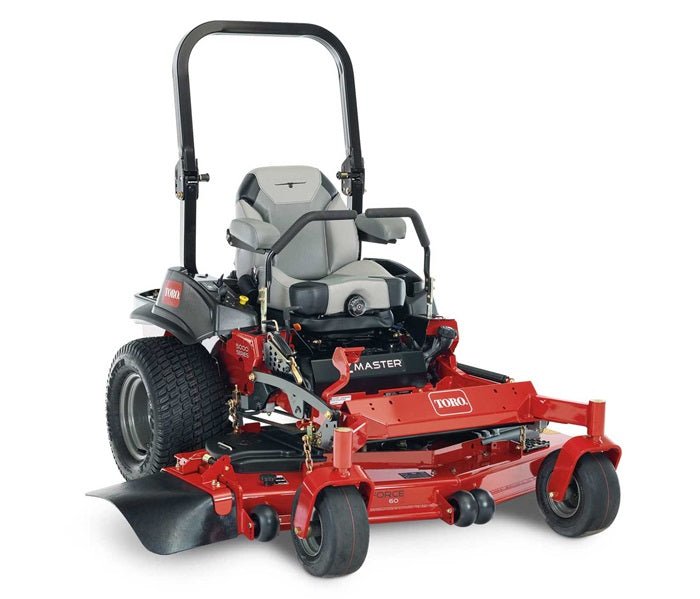So, you’ve finally invested in a zero-turn lawn mower, and you’re itching to get started on transforming your untamed yard into a beautifully manicured oasis. But before you jump on and start mowing away, it’s essential to understand how to operate this powerful equipment properly. This article will guide you through the basics of mastering the zero-turn lawn mower, from familiarizing yourself with the controls to learning the techniques that will ensure a flawless, professional-looking cut. Get ready to become the envy of your neighbors with your expert-level lawn mowing skills!
Understanding the Basics of a Zero-Turn Lawn Mower
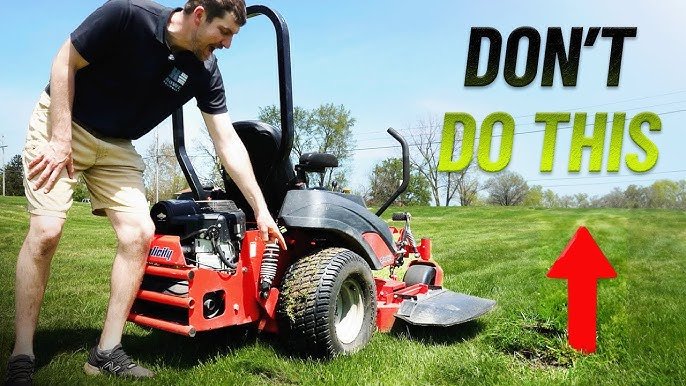
This image is property of i.ytimg.com.
What is a Zero-Turn Lawn Mower?
A zero-turn lawn mower is a type of lawnmower that is designed for residential and commercial use. It gets its name from its ability to make zero-degree turns, allowing for exceptional maneuverability around obstacles and tight spaces. Unlike traditional lawnmowers, which use a steering wheel to control movement, zero-turn mowers rely on two levers, one for each rear wheel, to control speed and direction. This unique steering system enables the mower to pivot on its own axis, making it incredibly efficient and fast.
Key Features of a Zero-Turn Lawn Mower
Zero-turn lawn mowers come with several key features that make them stand out among other types of lawnmowers. One of the most notable features is their speed and agility. With the ability to turn on a dime, you can quickly navigate, reverse, and change direction without wasting time and effort. Additionally, zero-turn mowers often have larger cutting decks, allowing you to cover more ground in a shorter amount of time. They also tend to be more powerful, with engines that deliver greater horsepower for tackling tough and thick grass.
Advantages of Using a Zero-Turn Lawn Mower
There are numerous advantages to using a zero-turn lawn mower. Firstly, their maneuverability is unparalleled. The ability to turn in tight spaces means you can easily mow around flowerbeds, trees, and other obstacles without having to navigate back and forth. This saves you time and ensures a more efficient mowing experience. Secondly, zero-turn mowers provide a superior cut quality. With their large cutting decks, sharp blades, and precise maneuvering, you can achieve a professional-looking lawn with even and clean cuts. Finally, these mowers are incredibly time-saving. Due to their speed and efficiency, you can mow your lawn in significantly less time compared to traditional mowers, leaving you with more time to enjoy your beautifully manicured yard.
Choosing the Right Zero-Turn Lawn Mower
Consider Your Lawn Size and Terrain
When selecting a zero-turn lawn mower, it is crucial to consider the size of your lawn and the terrain it encompasses. If you have a small to medium-sized yard, a compact zero-turn mower with a smaller cutting deck would be a suitable choice. However, for larger lawns or properties with hilly or uneven terrain, a larger and more powerful zero-turn mower with enhanced stability and traction would be more appropriate. Understanding the dimensions and terrain of your lawn will help you choose the right mower for optimal performance.
Selecting the Ideal Cutting Deck Size
The cutting deck size of a zero-turn mower refers to the width of the swath it cuts in a single pass. It plays a crucial role in determining how quickly you can mow your lawn. Smaller cutting decks, typically ranging from 30 to 42 inches, are suitable for residential yards with limited space, narrow gates, or complex landscapes. On the other hand, larger cutting decks, ranging from 48 to 72 inches, are more suitable for larger properties and commercial use. The choice of cutting deck size should be based on the size and layout of your lawn, as well as your personal preferences.
Engine Power and Fuel Capacity
The engine power and fuel capacity of a zero-turn lawn mower are important considerations for optimal performance. The engine power is measured in horsepower (HP) and determines the mower’s cutting capability and speed. For residential use, an engine power between 15 and 25 HP is typically sufficient. However, for commercial use or properties with dense vegetation, a higher horsepower engine may be necessary. Additionally, considering the fuel capacity is essential to ensure uninterrupted mowing. Larger fuel tanks are preferable for larger lawns, as they eliminate the need for frequent refueling breaks.
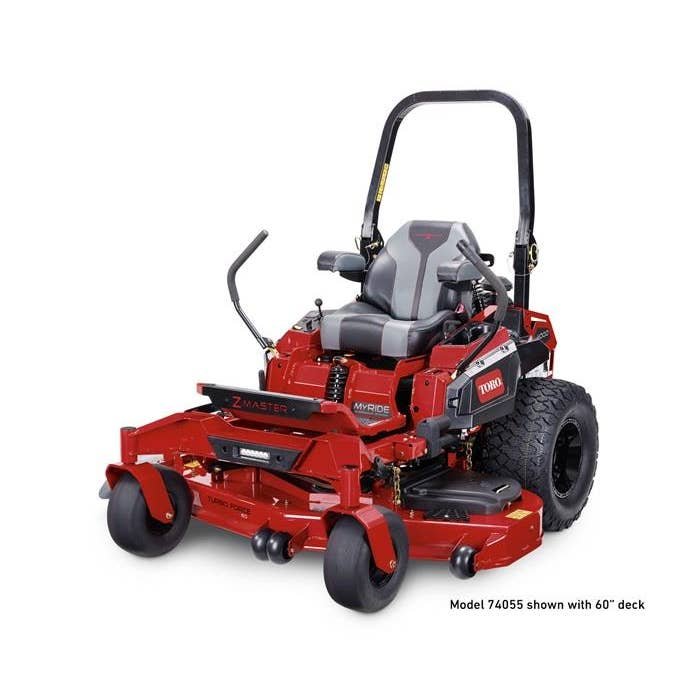
This image is property of www.sohars.com.
Evaluating Comfort and Maneuverability
Comfort and maneuverability should not be overlooked when choosing a zero-turn lawn mower. Look for features such as an ergonomic seat, adjustable controls, and vibration dampening systems that ensure a comfortable mowing experience, especially for longer sessions. Additionally, assess the mower’s overall maneuverability by testing its responsiveness to the controls, ease of steering, and smoothness of operation. The more comfortable and easy-to-use the mower is, the more enjoyable and efficient your mowing experience will be.
Additional Features to Look for
Zero-turn lawn mowers often come with additional features that can enhance their performance and convenience. Some of these features include mulching capabilities, bagging systems, headlights for mowing in low-light conditions, and the ability to attach accessories such as tow-behind spreaders or aerators. Consider the specific needs of your lawn and your personal preferences when deciding on these additional features. While they can enhance the versatility and functionality of your mower, keep in mind that they may also add to the overall cost.
Essential Maintenance for Optimal Performance
Cleaning and Inspecting the Mower
Regular cleaning and inspection are essential for maintaining the optimal performance of your zero-turn lawn mower. Start by removing any debris or grass clippings from the cutting deck, blades, and undercarriage. Use a brush or scraper to dislodge any stuck-on residue. Inspect the mower for any signs of damage or wear, such as bent blades, loose belts, or cracks in the deck. Pay close attention to the wheels, tires, and axles, ensuring they are properly lubricated and free from debris. Cleaning and inspecting your mower regularly will prolong its lifespan and prevent any potential issues from escalating.
Changing Oil and Filters
Similar to a car, a zero-turn lawn mower requires regular oil changes to maintain optimal performance. Check the manufacturer’s guidelines for the recommended oil change intervals and type of oil to use. Begin by running the engine for a few minutes to warm up the oil, as warm oil flows more freely. Then, locate the oil drain plug and drain the old oil into a suitable container. Replace the oil filter, if necessary. Finally, refill the engine with the recommended amount and type of oil. Regular oil changes will keep your mower’s engine running smoothly and extend its longevity.
Sharpening and Replacing Blades
Sharp blades are essential for achieving a clean and precise cut. Over time, the blades of your zero-turn mower can become dull due to regular use and contact with debris. It is important to sharpen or replace the blades as needed to maintain optimal cutting performance. Using a blade sharpening tool or a professional sharpening service, carefully sharpen the blades at the recommended angle. If the blades are damaged or excessively worn, it may be necessary to replace them entirely. Sharp and well-maintained blades will ensure a neat and healthy-looking lawn.
Checking Tire Pressure and Belts
Proper tire pressure is crucial for optimal traction and maneuverability. Regularly check the tires of your zero-turn mower to ensure they are inflated to the recommended pressure. Underinflated tires can affect the cutting quality and make the mower more difficult to control, while overinflated tires can lead to a harsh and uncomfortable ride. Additionally, inspect the drive belts and other belts for any signs of wear or damage. Loose or worn belts can affect the mower’s performance and may require adjustment or replacement. Maintaining optimal tire pressure and inspecting belts will contribute to a smoother and more efficient mowing experience.
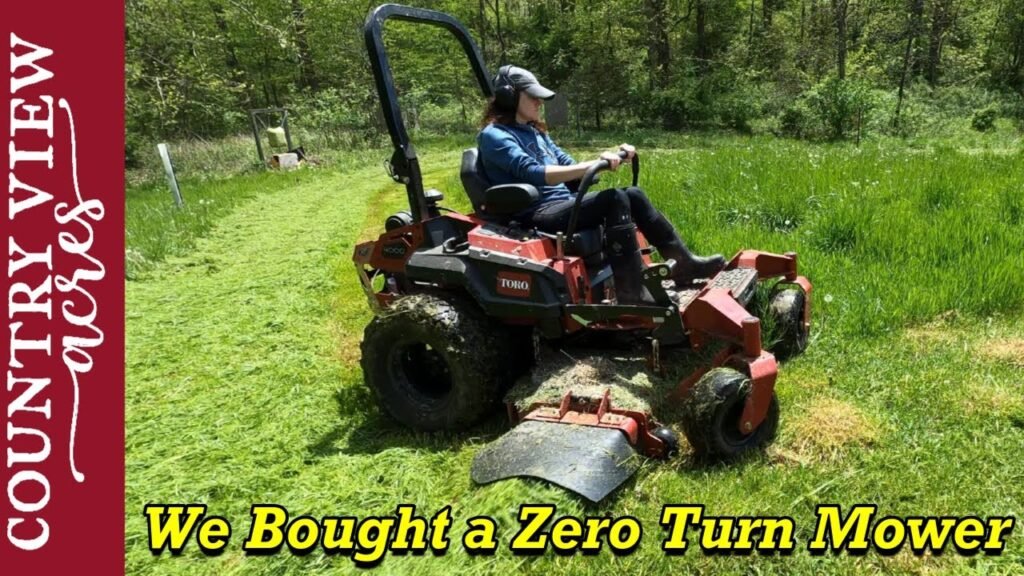
This image is property of i.ytimg.com.
Battery and Electrical System Maintenance
The battery and electrical system of your zero-turn mower require regular maintenance to ensure reliable performance. Start by checking the battery terminals for any signs of corrosion and clean them if necessary. Inspect the battery cables, connections, and wiring for any damage or loose connections. If your mower has a battery-powered ignition, replace the battery as recommended by the manufacturer. Additionally, inspect the electrical components of the mower, such as the ignition switch, fuses, and wiring, for any signs of wear or damage. Proper maintenance of the battery and electrical system will prevent unexpected issues and ensure a smooth start-up and operation of your mower.
Operating a Zero-Turn Lawn Mower Safely
Read the Manual and Understand the Controls
Before operating a zero-turn lawn mower, it is crucial to thoroughly read the manual provided by the manufacturer. The manual will provide detailed instructions on how to properly operate and maintain your specific model. Pay close attention to the information regarding safety precautions, recommended operation techniques, and maintenance guidelines. Familiarize yourself with the control layout and understand the functions of each lever, switch, and knob. Understanding the controls and following the guidelines in the manual will help ensure safe and efficient operation of your zero-turn mower.
Perform a Pre-Operation Inspection
Before each use, perform a pre-operation inspection to ensure your zero-turn lawn mower is in safe and working condition. Start by checking the fuel level, oil level, and tire pressure. Inspect the cutting deck, blades, and belt for any signs of damage or wear. Test the brakes, steering controls, and blade engagement system to ensure they are functioning properly. Additionally, check the seat and safety features such as the seat belt and operator presence control system. A thorough pre-operation inspection will help identify any potential issues and prevent accidents or breakdowns while mowing.
Wear Appropriate Safety Gear
When operating a zero-turn lawn mower, it is essential to wear appropriate safety gear to protect yourself from potential hazards. This includes wearing closed-toe shoes or boots, long pants, and safety glasses or goggles to shield your eyes from flying debris. If operating the mower in a noisy environment, consider using hearing protection such as earplugs or earmuffs. Gloves can also provide additional grip and protection while operating the controls. Taking the necessary precautions and wearing the appropriate safety gear will minimize the risk of injuries while mowing.
Start the Zero-Turn Mower Safely
To start your zero-turn mower safely, follow the recommended starting procedure provided by the manufacturer. Typically, this involves sitting securely in the operator’s seat, engaging the parking brake, and ensuring the control levers are in the neutral position. Turn the ignition key or press the start button, while keeping your feet on the floor and away from the cutting deck. Once the mower has started, release the parking brake and slowly move the control levers outward, away from the neutral position, to start moving. Starting your zero-turn mower safely will reduce the risk of accidents and ensure a controlled and smooth operation.
Navigating Various Obstacles
One of the main advantages of a zero-turn lawn mower is its ability to maneuver around obstacles. However, it is important to approach and navigate these obstacles with caution to prevent damage to the mower or injury to yourself. When encountering trees, flowerbeds, or other fixed objects, slow down and carefully maneuver around them, keeping a safe distance. Avoid sudden turns or sharp maneuvers that could cause the mower to tip over or damage the obstacle. Additionally, be mindful of potential hazards such as uneven terrain, wet grass, or hidden objects that could affect the stability and control of the mower. Navigating obstacles safely will help preserve the condition of your mower and ensure a well-maintained lawn.
Mastering the Art of Zero-Turn Mowing
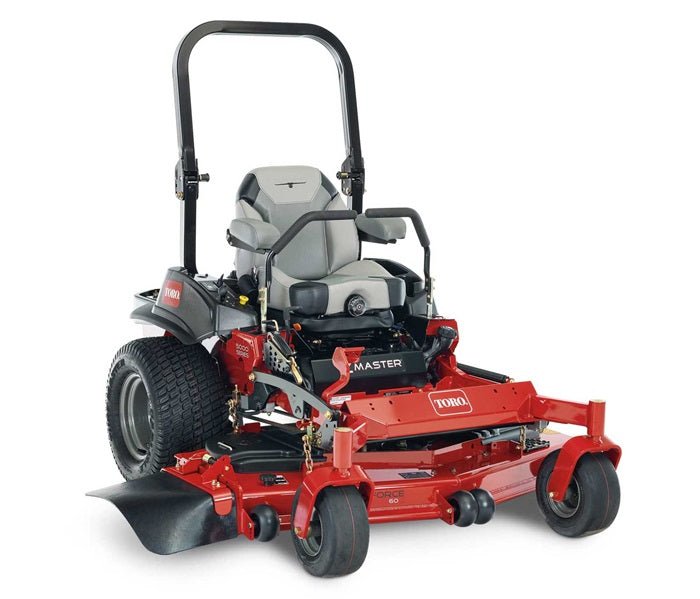
This image is property of www.mainstreetmower.com.
Getting Familiar with the Controls
To master the art of zero-turn mowing, it is essential to become familiar with the controls of your mower. Spend some time practicing in an open area or empty space to get a feel for how the mower responds to each control lever. Take note of the sensitivity and responsiveness of the levers and experiment with different movements and turning techniques. With practice, you will develop muscle memory and gain confidence in operating the mower, allowing for more precise and efficient mowing.
Understanding the Mower’s Turning Capabilities
Zero-turn mowers are known for their exceptional turning capabilities, but mastering these turns requires understanding the mower’s characteristics and limitations. These mowers excel at making tight turns and pivoting on their own axis. To execute a zero-degree turn, slow down and bring the control levers to the opposite directions. For example, to make a right turn, bring the left control lever forward while keeping the right lever in the neutral position. Practice making precise turns, gradually increasing your speed and experimenting with different turning techniques. Understanding the mower’s turning capabilities will help you navigate your yard efficiently and achieve professional-looking results.
Mowing Strategies for Efficiency
To maximize efficiency while mowing with a zero-turn lawn mower, it is important to have a systematic mowing strategy. Start by mowing along the perimeter of your lawn to establish clean and straight lines. Then, mow back and forth in parallel rows, overlapping each pass to ensure even coverage. When turning at the end of each row, execute a zero-degree turn to minimize the chance of scalping or damaging the grass. Avoid excessive overlap between rows to avoid unnecessary passes. By following a strategic mowing pattern, you can accomplish your mowing tasks quickly and efficiently.
Trimming and Edging Techniques
In addition to mowing large areas, zero-turn mowers can also be used for trimming and edging. When trimming around trees, fences, or other obstacles, use the maneuverability of the mower to make precise and clean cuts. Slow down and carefully navigate around the edges without getting too close to the obstacle. For edging along sidewalks or driveways, position the mower parallel to the edge and use one wheel to trace the line, ensuring a neat and defined edge. These trimming and edging techniques can provide a polished and professional look to your lawn.
Achieving Professional-Looking Results
To achieve professional-looking results with your zero-turn lawn mower, attention to detail is key. Make sure to overlap each pass slightly to avoid leaving uncut strips of grass. Maintain a consistent mowing height throughout your entire lawn to ensure an even appearance. Pay attention to any missed spots or areas with longer grass, and make additional passes if necessary. Additionally, keep the blades sharp and in good condition to prevent tearing or fraying of the grass blades. By combining precision, consistency, and proper maintenance, your zero-turn mower will help you achieve a lush and well-manicured lawn.
Troubleshooting Common Issues with Zero-Turn Mowers
Diagnosing Engine Problems
If you encounter issues with your zero-turn mower’s engine, it is important to diagnose the problem promptly. Common engine problems include difficulty starting, a loss of power, unusual noises, or excessive smoke. Start by checking the fuel level and ensuring the spark plug is properly connected and not fouled. Inspect the air filter for any signs of clogging or damage. If the engine continues to experience issues, it may require professional assistance to diagnose and resolve the problem. Regular maintenance, such as changing the oil and replacing filters, can help prevent engine problems from arising.
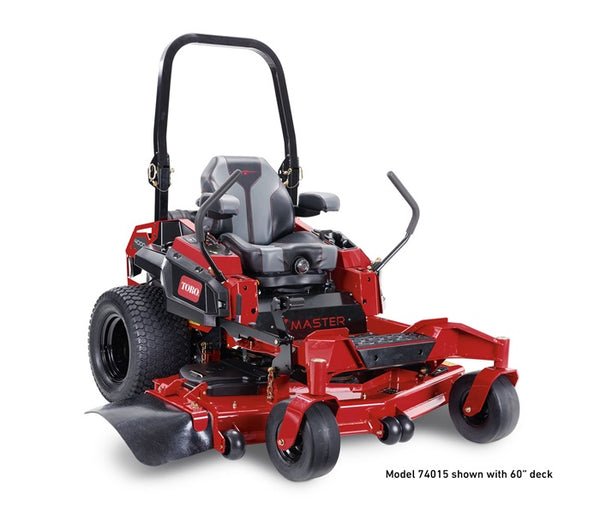
This image is property of cdn.shopify.com.
Resolving Cutting or Striping Unevenness
Uneven cutting or striping on your lawn can be caused by various factors. One common reason is dull or damaged blades. Inspect the blades for signs of wear or damage, and sharpen or replace as necessary. Additionally, check the cutting deck for any signs of misalignment or damage. Adjust the deck to the appropriate height and ensure it is level. Another consideration is the speed at which you are mowing. Mowing at a consistent speed can help achieve an even cut. Experiment with different mowing patterns and techniques to determine the best approach for achieving an even and professional-looking lawn.
Addressing Steering or Wheel Track Issues
If you notice uneven wheel tracks or difficulty in steering your zero-turn mower, it could indicate a problem with the steering system or wheel alignment. Check the tire pressure and ensure all tires are inflated to the recommended level. Uneven tire pressure can affect the stability and maneuverability of the mower. Inspect the steering controls and levers for any signs of damage or malfunction. Additionally, evaluate the wheel alignment by comparing the distance between the front and rear wheels on each side of the mower. Adjust the alignment if necessary. Proper maintenance and regular inspections can help prevent steering or wheel track issues from occurring.
Solving PTO or Blade Engagement Troubles
PTO (power take-off) or blade engagement issues can prevent the cutting blades of your zero-turn mower from spinning or engaging properly. First, check that the PTO switch or lever is in the correct position and has not been damaged or disconnected. Inspect the wiring and connections to ensure they are properly secured. If the blades are still not engaging, check the belt tension and condition. A loose or worn belt may need to be adjusted or replaced. If troubleshooting steps do not resolve the problem, consult the manual or seek professional assistance to address PTO or blade engagement troubles.
Dealing with Electrical or Battery Problems
Electrical or battery problems can occur with zero-turn mowers, affecting their starting and operation. If you experience issues with electrical components or starting the mower, start by checking the battery and its connections. Ensure the battery is properly charged and the terminals are clean and securely connected. Inspect the wiring and connections for any signs of damage or loose connections. If the electrical problem persists, consult the manual or contact a professional for further assistance. Regular maintenance, such as cleaning the battery terminals and inspecting the electrical system, can help prevent electrical or battery problems from occurring.
Storage and Winterizing the Zero-Turn Mower
Proper Cleaning and Rust Prevention
Before storing your zero-turn mower for an extended period, it is essential to clean it thoroughly to remove any grass clippings, debris, or residue. Use a brush or scraper to remove stuck-on material from the cutting deck, blades, and undercarriage. Rinse the mower with water and allow it to dry completely. Once dry, apply a rust preventive spray or coating to susceptible areas such as the cutting deck, wheel axles, and other metal components. This will help protect the mower from rust and maintain its condition during storage.
Fuel System Preparation for Storage
Preparing the fuel system for storage is crucial to avoid fuel contamination and other related issues. Add a fuel stabilizer to the fuel tank and run the engine for a few minutes to ensure the stabilized fuel has circulated throughout the system. This will prevent the fuel from deteriorating and clogging the carburetor or fuel lines during storage. Additionally, it is important to run the mower until the fuel tank is nearly empty before storing it. This minimizes the risk of fuel degradation and ensures a fresh fuel supply when it is time to use the mower again.
Protecting the Battery and Electrical Components
When storing your zero-turn mower, take steps to protect the battery and electrical components from damage and degradation. If possible, remove the battery and store it in a cool and dry location. Inspect the battery terminals and connections, cleaning them if necessary. Apply a thin layer of petroleum jelly or a battery terminal protector to prevent corrosion. If the battery remains in the mower, periodically top up the charge using a battery maintainer or trickle charger to prevent it from discharging completely. Taking these precautions will help prolong the life of the battery and preserve the functionality of the electrical components.
Storing the Mower in a Suitable Location
Choosing the right storage location for your zero-turn mower is crucial to maintain its condition and prevent any damage. Store the mower in a dry and well-ventilated area, away from extreme temperatures and direct sunlight. If possible, store it indoors, such as in a garage or shed. Elevate the mower or use a protective tarp or cover to shield it from dust, moisture, and debris. Keep the storage area clean and free from any potential hazards that could damage the mower. By storing your zero-turn mower properly, you can ensure it remains in optimal condition for the next mowing season.
Regular Servicing and Professional Assistance
Importance of Regular Servicing
Regular servicing of your zero-turn mower is vital to maintain its performance and prolong its lifespan. Follow the manufacturer’s recommended service intervals and guidelines for routine maintenance tasks such as oil changes, filter replacements, and blade sharpening. Inspect key components such as belts, tires, and wiring regularly for signs of wear or damage. Clean the cutting deck and undercarriage to prevent debris buildup. By performing regular servicing, you can address any minor issues before they escalate into major problems and ensure your mower continues to deliver optimal results.
When to Seek Professional Help
While regular maintenance can prevent many issues, there are instances where professional assistance may be necessary. If you encounter persistent problems, such as recurrent engine issues, excessive vibration, or electrical malfunctions, it may be worth seeking the help of a professional technician. They have the expertise and specialized tools to diagnose and resolve complex problems. Additionally, if you are not confident in performing certain maintenance tasks or lack the necessary tools, it is best to rely on professionals to ensure the job is done correctly. Knowing when to seek professional help can save you time and prevent further damage to your zero-turn mower.
Choosing a Reliable Service Provider
When selecting a service provider for your zero-turn mower, it is important to choose a reliable and reputable company. Start by researching local service providers and reading reviews or testimonials from previous customers. Look for providers who specialize in lawn mower repairs and have experience working with zero-turn mowers. Verify that the service provider is trained and certified by the mower’s manufacturer, ensuring they have the knowledge and expertise to handle your specific model. Additionally, inquire about the warranty coverage provided by the service center. Choosing a reliable service provider will give you peace of mind knowing that your zero-turn mower is in capable hands.
Upgrading and Customizing Your Zero-Turn Mower
Adding Accessories for Convenience and Efficiency
One way to enhance the functionality and convenience of your zero-turn mower is by adding accessories. There are various accessories available, such as bagging systems, tow-behind spreaders, and utility trailers, which can improve the efficiency of your mowing tasks. Bagging systems help collect grass clippings, reducing the need for raking or disposing of the clippings separately. Tow-behind spreaders allow you to distribute fertilizer or seed evenly across your lawn while mowing. Utility trailers can be attached to the mower, providing a versatile hauling solution for various yard maintenance tasks. Consider your specific needs and the compatibility of accessories with your mower before making any upgrades.
Upgrading to a Suspension System
Upgrading your zero-turn mower to a suspension system can significantly improve comfort and stability, especially on rough or uneven terrain. Suspension systems absorb shock and vibrations, minimizing the impact on the operator and reducing fatigue during long mowing sessions. Some suspension systems allow for adjustable settings, allowing you to tailor the suspension stiffness to your personal preference and the condition of your lawn. Consider your budget and the type of terrain you regularly encounter when deciding whether to invest in a suspension system upgrade.
Installing Advanced Cutting Systems or Mulching Kits
For those looking to achieve superior cutting performance, advanced cutting systems or mulching kits are worth considering. Advanced cutting systems, such as mulching blades, high-lift blades, or mulching kits, can enhance the quality and efficiency of your lawn mowing. Mulching blades or kits finely chop grass clippings into tiny pieces, effectively returning nutrients back into the soil. High-lift blades are designed to create powerful airflow, resulting in better bagging and clipping dispersal. When choosing advanced cutting systems or mulching kits, ensure compatibility with your zero-turn mower and consider your specific mowing needs and preferences.
Tire Upgrades for Enhanced Traction
If you frequently encounter challenging terrain or need improved traction, tire upgrades can make a significant difference in the performance of your zero-turn mower. There are various tire options available, including turf tires, all-terrain tires, or heavy-duty traction tires. Turf tires provide a gentle touch on the grass, minimizing damage and offering excellent traction. All-terrain tires are suitable for properties with various terrains, providing good traction on both grass and uneven surfaces. Heavy-duty traction tires are designed for maximum traction, making them ideal for hilly or slippery terrain. Consider the type of terrain you mow and the level of traction required before investing in tire upgrades.
Customizing the Appearance of Your Mower
Customizing the appearance of your zero-turn mower can help personalize your machine and reflect your style. Some customization options include adding decals or graphics, changing the seat color or design, or installing LED lights for enhanced visibility. Prioritize customization options that do not compromise the functionality or safety of your mower. Consult the manufacturer or authorized dealers to inquire about any available customization options or recommendations for compatible accessories. By customizing the appearance of your mower, you can make it uniquely yours and showcase your personality while mowing.
Conclusion
Enjoying the Benefits of a Zero-Turn Lawn Mower
A zero-turn lawn mower offers unparalleled maneuverability, time-saving efficiency, and superior cut quality. By understanding the basics of a zero-turn mower, choosing the right model for your lawn, and mastering its operation, you can achieve professional-looking results and maintain a beautifully manicured lawn. Regular maintenance, proper safety practices, and storage preparation will ensure optimal performance and prolong the lifespan of your zero-turn mower. Consider upgrading or customizing your mower to further enhance its functionality and personalization. With continuous learning and attention to detail, you can enjoy the benefits of a zero-turn mower year after year, making lawn care a breeze.

